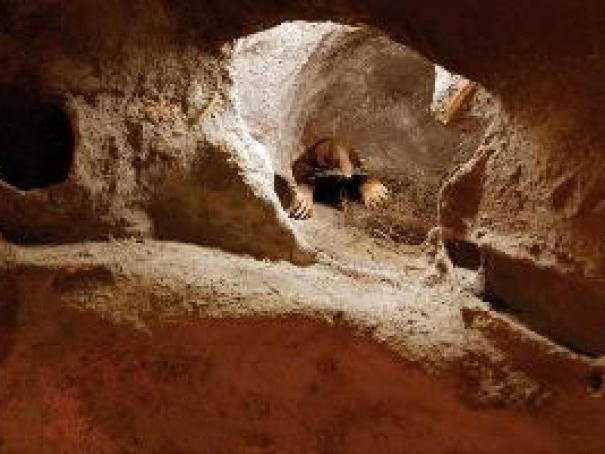The famous naturalist Dokuchaev always attached great importance to the wide dissemination of information about the soil. Thanks to his efforts, the first Soil Science Museum was organized not only in Russia but throughout the world. St. Petersburg began to attract not only art lovers, but also scientists.
Good goals
The objectives of the institution were as follows: the development of a natural science classification of soil types and the collection of the most complete collection of Russian soils and subsoils. This, according to Dokuchaev, was supposed to fill the most important gap in science and raise the level of soil science.
The Museum of Soil Science opened its doors in 1904. The first exhibits were copies from the collections of Dokuchaev himself, who had previously exhibited in many cities of Russia, as well as in Chicago and Paris.
Exposure Features
In the central part of the exhibition, one could familiarize oneself with the conditions of soil formation as a natural formation, and in the remaining sections with its features in certain natural zones of the European part of the country. Each region was represented by a small monolith of soil typical of these territories.
From the first years of its existence, the Museum of Soil Science played the role of the largest scientific center of the country. Currently, an analytical laboratory and a library are operating under him.
Transformations
In 1917, the Museum of Soil Science was included in the soil department, opened at the Permanent Commission for the Study of the Natural Productive Forces of the Soviet Union. The year 1925 was marked by the opening of the exposition under the direction of B. Polynov. Departments were organized at the updated exhibition areas, revealing the features of soil formation and weathering processes, representing a systematically composed collection of soil monoliths in the European and Asian territories of the Union. At the same time, the Museum of Soil Science replenished with a historical section.
New Horizons
Thanks to the organization of the Soil Institute, it became possible to comprehensively develop the Museum of Soil Science. During the reconstruction, three departments were formed - pedagogical, systematic and demonstration. The latter had an introductory and soil-geographical department. All natural zones and their role in soil formation were examined in the most thorough manner.
In 1946, the hundredth anniversary of the birth of Vasily Dokuchaev was celebrated . In honor of this institution was renamed the Central Museum of Soil Science. V.V. Dokuchaev.
The development of a new master plan for the exposition was undertaken by Zinaida Shokalskaya. That was in 1950. As a result of painstaking work, the number of models and comparative settings of different types of soils was increased.
Contemporary Exhibitions
Currently, the Museum of Soil Science allows its visitors to learn about what soil is as a special natural body, what are the ecological and geographical features of its formation, it also talks about violations and protection of the soil cover, about its transformations. It is noteworthy that the information for each section is presented in the form of a thematic and artistic complex. The latter includes scientific data in graphical, schematic and digital form. Artistic elements are represented by photographs, herbarium, dioramas, sculptures and landscape painting.
The main exhibits of the museum are, of course, soil monoliths. They are vertical sections of the soil with a natural structure in the form of a prism. Their width is 22 centimeters, height is a meter. At the moment, the exposition is represented by 332 copies.
Basic collections:
- monoliths characterizing the soil cover of the planet;
- cultivated soils;
- reclaimed;
- reclaimed;
- man-made disturbed soils.
Among the unique exhibits are a soil globe with a diameter of 1 m 20 cm, a monolith 125 years old, an octagonal monolith 170 cm high from the Central Black Soil Reserve "Streletskaya Steppe" (Kursk Region).
Excursions
The Museum of Soil Science (St. Petersburg) offers interesting informative programs for schoolchildren, students and all those interested in the secrets of the world. So, younger schoolchildren and preschoolers can get acquainted with the influence of climate, plants and soil on life, traditions and customs of different nations when watching thematic cartoons. Museum staff also organize workshops on making applications from plant seeds that grow on different types of soils. It is not surprising that even kids with interest visit the Museum of Soil Science. “Underground Kingdom” is another excursion during which children find themselves inside the soil and get acquainted with the peculiarities of life of its inhabitants. After a fascinating journey, cartoons like City of Bacteria, Journey of the Earthworm and Super Drops to the Rescue are offered for viewing.

High school students will be interested in excursions “Earth-nurse”, “What is the soil?”, “Underground kingdom” and “Natural areas”. High school students and students - “The Sacrament of Fertility”, “Soil of Russia”, “Shagreen skin of the planet” and many others.
Special holiday
For many years, it has been pleasing visitors and helping to discover the world around the Soil Science Museum. The institution’s birthday in 2014 is special, because this scientific center marks one hundred and ten years.
Mode of operation
The Soil Science Museum opens its doors at 10 in the morning and closes at five in the evening. On Tuesday, you can visit this place without an appointment and without payment. Excursion support on this day is not provided. Saturday and Sunday are weekends.